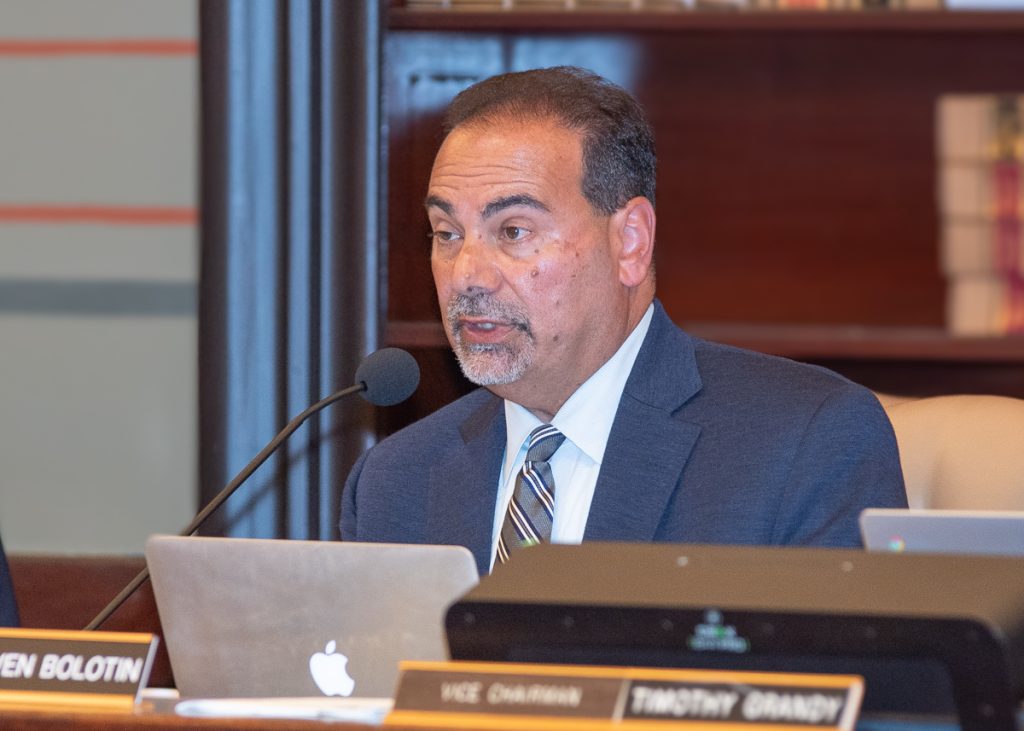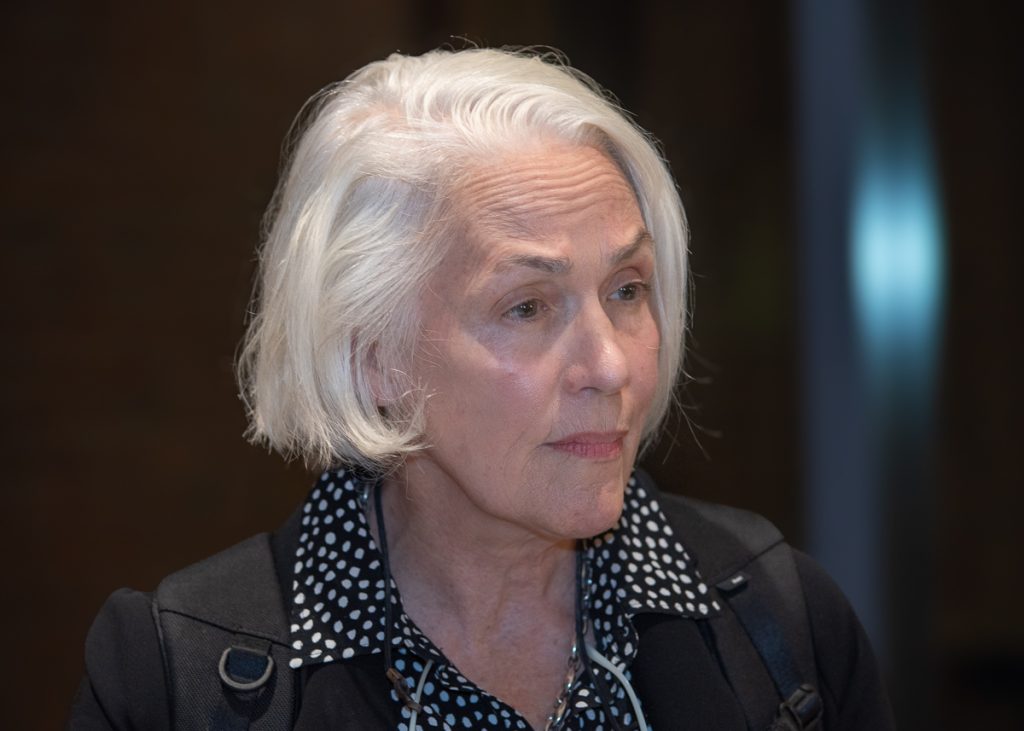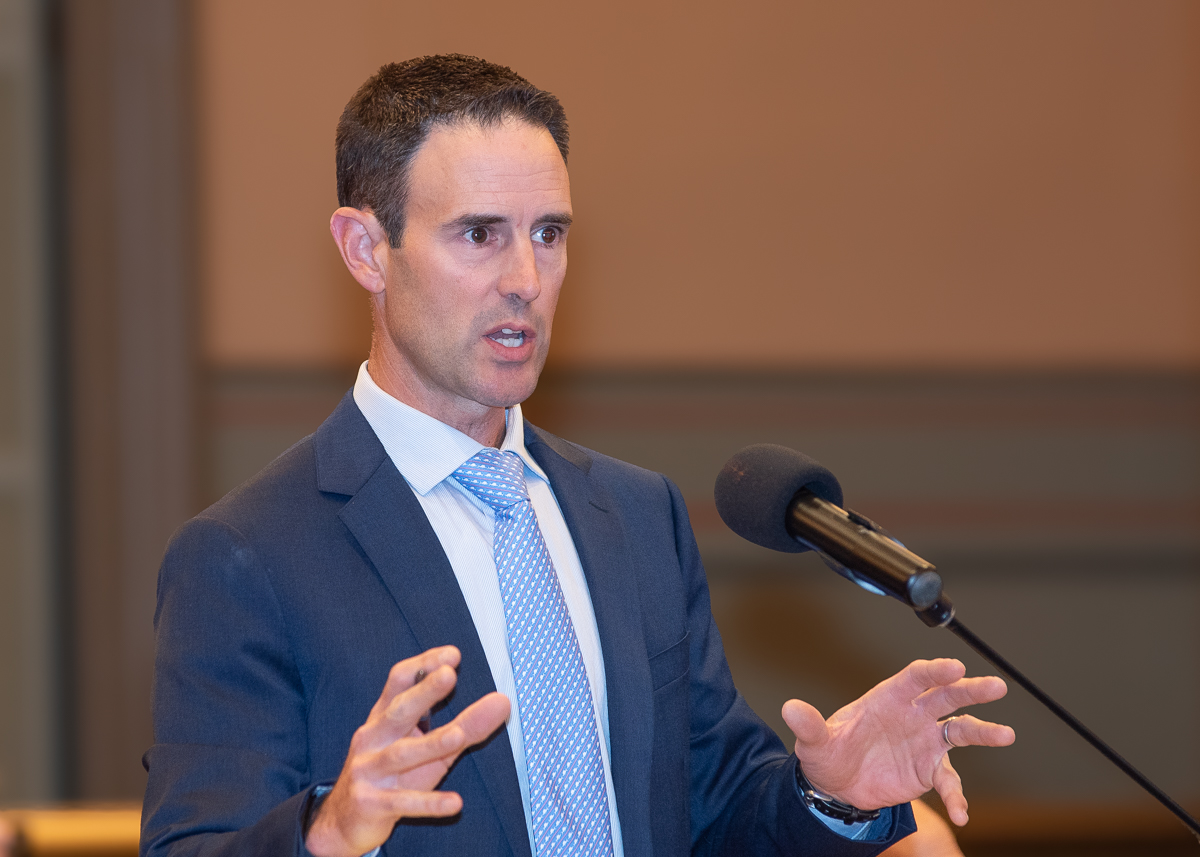As they began a review of a proposal to build a 34-acre business park in Cedarville, Planning Board members Wednesday expressed concerns about the amount of truck traffic the project will add to an already congested area of town and questioned the design, which calls for flattening much of the hilly site.
The developer, Standish Investment Group, proposes a four-building complex off 71 Hedges Pond Road that includes a 176,000-square-foot warehouse with multiple loading docks, a 75,000-square-foot recreational facility suitable for two ice hockey rinks (although there is no commitment from anyone to buy or lease them), and two 20,000-square-foot buildings designated in the documents as a wholesale lumber yard.
“This site was consciously designed for development,” Robb D’Ambruoso, attorney for the developer, told the Planning Board. “This project fits in specifically with what the town has asked for.”
The land was owned by the town for decades and managed by the Conservation Commission for open space and conservation purposes. In the fall of 2018, Plymouth Town Meeting voted unanimously to re-zone a portion of the land to create the Cedarville Village Enterprise District and allow for light industrial and commercial uses to help increase the town’s tax base and create jobs.
The business park, as proposed, is an allowed use in the Cedarville Village Enterprise District, so the Planning Board’s review process is limited.

“It’s not for us to say ‘no’ to development here,” said Planning Board Chair Steven Bolotin. “We do not overrule Town Meeting. What we have to do is balance the interests of economic development and community impact to the best of our ability.”
The Planning Board, however, can make recommendations to the town’s Inspectional Services department for how the development will be constructed, and its recommendations typically become conditions of any permits issued.
The board must also make two important decisions. First, does the project meet the standards of a “unified complex,” a provision of the zoning bylaw that allows multiple buildings on one lot to share parking, drainage systems, and utilities. Second, it must decide whether the 350,000 cubic yards of material proposed to be removed from the site is “incidental” to the overall development.
If deemed incidental, then the developer only needs to apply for an earth removal permit from the town. If the board finds it is more than just incidental, the developer must apply to the Zoning Board of Appeals for a special permit to remove that much fill. That’s a more involved legal process requiring a separate public hearing on the earth removal plan.
“There is no hiding from the fact that the grading (of the site) is a big issue,” said Planning Board member Tim Bennett. “As a whole, I think this project is good for the community and will get built, with some tuning to make it a little more palatable.”
Wednesday’s meeting was called an “informational” session for the Planning Board. The development team made a presentation to and fielded questions. There was no public comment on the project allowed during the meeting, but the public will have its opportunity to comment at subsequent meetings, Bolotin said.

After the meeting, Meg Sheehan, an attorney and coordinator of the Plymouth-based Community Land & Water Coalition who attended with a group of opponents to the project, said they will be ready when the Planning Board asks for public comment.
“The Town Meeting members I speak with feel they were duped in 2018,” Sheehan said. “They expected some other kind of development, not a sand mining operation.”
The CLWC has long advocated to protect the region’s groundwater aquifer, which is the sole source of public drinking water in Plymouth, Carver, and portions of Kingston, Bourne, Plympton and Wareham. The region’s abundance of sand and gravel is critical to filter rainwater and snow melt as it percolates down to recharge the aquifer and should be protected, Sheehan said.
The project now moves to the Cedarville Steering Committee, which has scheduled a public meeting on Sept. 18 to consider the project and make an advisory recommendation to the Planning Board.
“There will be a lot of questions at the steering committee,” said Planning Board member Tim Grandy, who is the board’s liaison to the Cedarville Steering Committee. “The traffic in that area is already horrendous and is only going to get worse.”
Meanwhile, the Planning Board asked for more information on the amount of truck traffic that will access the site, both during construction and after the proposed warehouse is operating. The board also asked the developer’s engineering team to consider alternatives to the site plan that would reduce steep slopes proposed in some areas and limit the amount of material to be hauled off site. The Planning Board will also conduct a site visit with the development team prior to its next public meeting, which is scheduled for Sept. 25.
Michael Cohen can be reached at michael@plymouthindependent.org.

